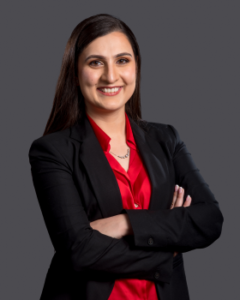
Rice boasts essential nutrients that support your body and furnish the energy needed for your daily activities. Nevertheless, consuming improperly stored or reheated leftover rice can result in digestive discomfort and the risk of foodborne illnesses, explains India’s top dietician for gastrointestinal health Avni Kaul.
After cooking and consuming rice, any excess may be inadvertently left at room temperature for hours, or even overnight. Unfortunately, this creates an environment conducive to bacterial contamination and rapid proliferation. This occurrence is commonly referred to as the “fried rice syndrome.”
Bacillus cereus is one of the prevalent bacteria found in rice. This spore-forming microorganism can flourish when the rice becomes contaminated, generating toxins that have the potential to induce food poisoning.
The toxins produced by B. cereus in starchy foods exhibit heat resistance. Consequently, reheating leftover rice might not effectively eliminate the bacteria, leaving the potential for food poisoning. It is crucial to recognize that this risk isn’t exclusive to rice alone; any type of grain could harbor bacteria if not stored and reheated properly.
Bacteria could undergo quick proliferation if rice remains within the temperature range of 40 to 140 degrees Fahrenheit (4 to 60 degrees Celsius) for more than two hours. As a precaution, rice should not be left at room temperature for over two hours, and this duration should be reduced to one hour if the ambient temperature exceeds 90 degrees Fahrenheit or 32 degrees Celsius. To ensure the safety of your leftover rice against harmful bacteria causing food poisoning, it is important to transfer the rice into a covered container and promptly refrigerate it once it cools down. When stored in a refrigerator maintained below 40 degrees Fahrenheit (4 degrees Celsius), leftover rice can be safely consumed for up to four days.
For safe consumption of leftover rice, it is recommended to reheat it only once. Opt for reheating only the necessary portion instead of the entire batch. Make sure that both rice and any leftover pasta are heated to an internal temperature of 165 degrees Fahrenheit (74 degrees Celsius). Enjoy your meal!

Avni Kaul is a leading Dietitian & Nutritionist in Delhi NCR and the Founder of Nutri Activania. She holds a Master's Degree in Food and Nutrition from the University of Delhi and is a Certified Diabetes Educator from Project Hope and the International Diabetes Federation.
Her extensive experience includes serving as a Leicester Mamma's Ambassador, trained in Lactation Counselling with the NHS, United Kingdom.
Ms. Kaul specializes in key areas such as Infant and Young Child Feeding Practices, Pre- and Post-natal Diets, Fat Loss, Muscle Gain, and Holistic Health and Nutrition.
2024 © All Rights Reserved